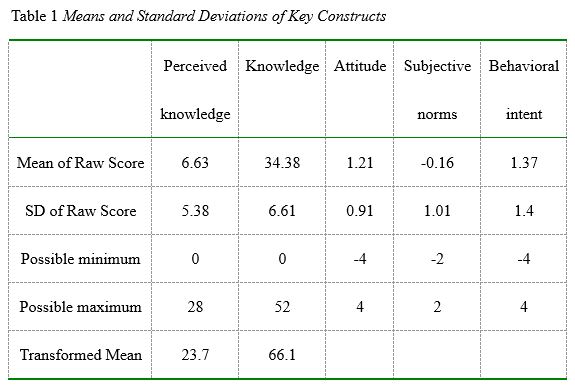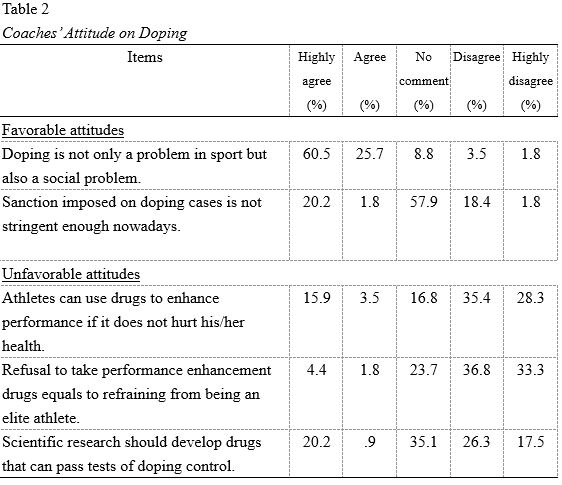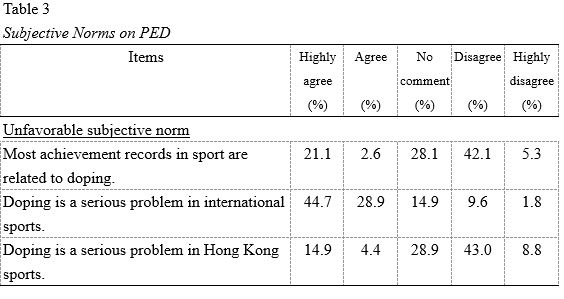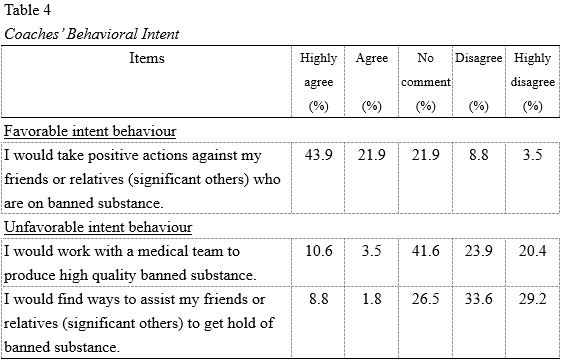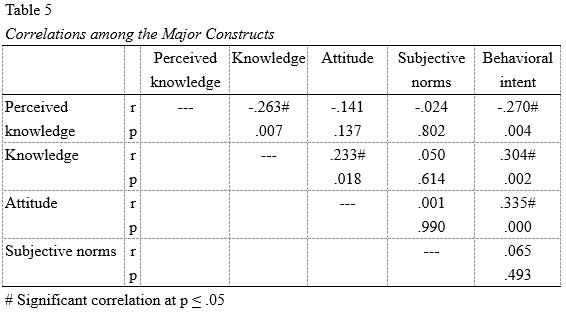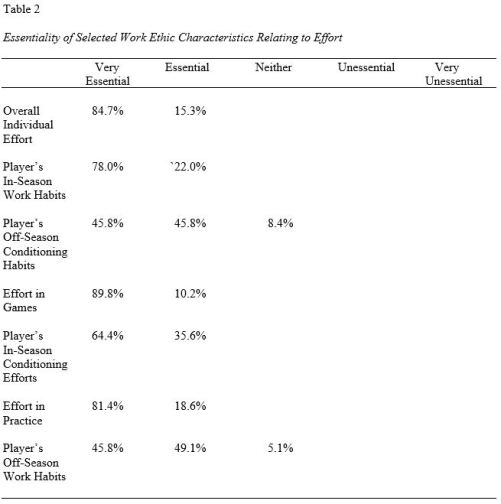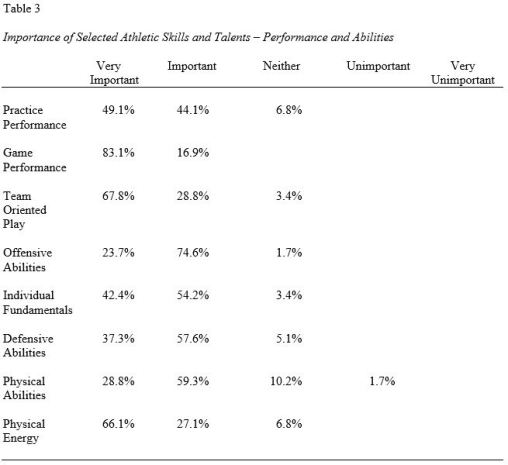The Physical and Physiological Properties of Football Players from a Turkish Professional First-Division Football League
Abstract
This research aims to determine the effects of a six weeks pre-season
preparation training period on the physical and physiological characteristics
of a football team in the Turkish Professional First Division League.
Twenty football players participated in this study. Their ages were 22.2
± 3.41 years old, and they had 12.4 ± 4.2 years of training.
Their height was 178.9 ± 5.13 cm. (Table 1). The body weight, body
fat percentage, flexibility, systolic/diastolic blood pressure, aerobic
capacity, anaerobic power, vertical jump, and speed of these players were
tested twice; once at the beginning of the six-week pre-season preparation
training period and again at the end of the training period (Table 2).
Research data was evaluated statistically with pair-t test at a significance
level of (p‹ 0.05). There were some significant changes in weight,
body fat percent, systolic/diastolic blood pressure, aerobic capacity,
anaerobic power, and vertical jump. There were no any statistically significant
changes in elasticity and speed.
Introduction
Recently, there have been significant changes related to the physiological
and medical aspects of football. Studies on the ideal physical and physiological
properties of a successful football player show that due to the improvements
in the speed and skills of the football players, football has become more
dynamic (Mangine, et al., 1990).
The increase in productivity of sportsmen results directly from the quality
and quantity of the hard work achieved within training. From the beginning
level higher levels, tasks during training should be increased gradually
depending on the psychological and physical skills of each sportsman (Bompa,
1998). Players of higher level function and structural power may overcome
the challenging conditions of a professional football season with intensive
pre-season training. If gradual increases are applied consciously and
regularly within training sessions, higher levels of adjustments may continue
(Renklikurt, 1991).
A pre-season preparation period covers the period from the beginning
of team-training till the first official match. The length of these training
periods may differ from one country to another. During this training period,
physical conditioning should be composed mainly of games and exercises
with a ball. The number of training sessions from the beginning of football
season should be increased gradually (Bangsbo, 1994).
The most important thing that the technical committee should consider
before the season begins is the physical condition of football players
after the holiday season. Because of this, some teams include physical
and physiological tests in their programs to see how the players are doing
and to evaluate their preparation plans. These tests give information
on the properties of endurance, speed, muscular endurance, strength, coordination,
technical, and tactical elements during the preparation period.
Body composition is an important physical component for football. Excess
body fat makes the body move constantly against gravity and it is an unnecessary
load for footballers (Reilly, 1996). Although there have been several
studies that examined the seasonal changes in the body composition of
elite sportsmen’s (Siders, et al. 1994 & Morris and Payne, 1996);
there are not enough studies on the effects of a pre-season preparation
training period on the physical and physiological properties of high level
professional footballers’ performance, particularly in regards to
body composition. This study aims to determine and examine the physical
and physiological changes that occur during a six week pre-season preparation
training period to a football team of the Turkish Professional First Level
Division League.
Methodology
In this study, the professional football team is in Ankara. Pre-testing
was performed on the team after the holiday season and the follow up post-testing
was done after a pre-season preparation training period. The pre-season
preparation training period lasted six weeks with sixty training sessions
and six preparation games played. The properties of the footballers who
participated in this study are clearly tested pre and post the six-week
pre-season participation training period (Table 2).
Body fat percent (BFP) was calculated utilizing a skin fold method and
identified as percent mass (Adams, 1990). Systolic and diastolic blood
pressure was recorded as mmHg utilizing a stethoscope and sphygomanometer
in a stable sitted position. In order to determine the aerobic capacity,
a twenty meter shuttle run test was done on a grass field. The shuttle
run test was utilized to measure maximum oxygen consumption VO 2max and
defined in ml/kg/min (Tamer, 1995). Anaerobic strength measurements were
done utilizing the Bosco test protocol (Bosco Contact Mat; New Test 1000)
and the results indicated as watts. The vertical jump test was measured
utilizing jump meter equipment and the sit and reach equipment was utilized
to measure flexibility. The ten-meter and thirty-meter speed values were
calculated on the grass field starting 1m behind the starting point with
the help of sensory photocell. Research data was evaluated by t-test utilizing
a SPSS 10.0 statistical package program with significance level of (p
‹ 0.05).
Findings
Several physical and physiological properties of footballers’
were measured in a pre and post testing protocol and the measurements
were recorded and evaluated. (Table 2).
Values prior to the six-week pre-season preparation training period were
as followings: body weight 74.65 ± 5.90 kgs, body fat percent 6.43
± 1.67 %, vertical jump 58.70 ± 6. 94 cms, anaerobic power
27.59 ± 4.01 watts/ kg, ten meter speed 1.64 ± 0.41 seconds,
thirty meter speed 4.06 ± 0.91 seconds, flexibility 31.57 ±
5.78, VO2max 56.95 ± 4.07 ml/kg/min, systolic blood pressure 114.5
± 6.04 mmHg, and diastolic blood pressure 74.0 ± 6.40 mmHg.
Values after the six-week pre-season preparation training period were
as followings: body weight 73.85 ± 5.34 kgs, body fat percent 5.84
± 1.36 %, vertical jump 60.80 ± 7. 01 cms, anaerobic power
30.29 ± 7.76 watts/kg, ten meter speed 1.62 ± 0.32 seconds,
thirty meter speed 4.02 ± 0.13 seconds, elasticity 33.32 ±
4.32 cms, VO2max 59.48 ± 3.28 ml/ kg/ min, systolic blood pressure
71.0 ± 5.52 mmHg, and diastolic blood pressure 110.7 ± 6.93
mmHg.
These findings show that after the six-week pre-season preparation training
period there were some statistically significant differences between the
pre and post measurements in the values concerning body weight, body fat
percent, systolic and diastolic blood pressure, anaerobic power, aerobic
power, and vertical jump at a level of (p‹ 0.05). The values of
ten-meter speed, thirty-meter speed, and elasticity improved, but they
were not statistically significant at a level of (p‹ 0.05).
Discussion
In this study, the results of the tests done to determine the physical
and physiological properties of a football team in the Turkish Professional
First Division League pre and post a six-week pre-season preparation training
period were evaluated. The average age of the twenty players was 22.2
± 3.41; they had 12.4 ± 5.34 years of training; they had
a height of 178.9 ± 5.13cms. There was a significant increase in
body weight with a post-measurement of 73.85 ± 5.34 kgs.
In a previous study on a first division league team in England, having
a twenty-eight pre-season preparation training sessions lasting thirty-five
days, showed an increase in the body weight of the players, with a pre-training
period body weight measurement from 74.05 ± 9.2 kgs. to a post-training
period body weight measurement of 77.6 ± 8.7 (Mercer et al.,1992).
The body weight values of another study on a football team in Turkish
first division league also had six-week pre-season preparation training
period and their pre-training period body weight of 74.05 ± 6.60
went to a post-training period body weight of 73.68 ± 6.04 (Acikada
et al., 1996).
In the pre-training period the body fat percent measurement was 7.43
± 1.67 percent and in the post-training period body fat percent
measurement decreased to 6.84 ± 1.36. This decrease was also statistically
significant at a level of (p ‹ 0.05). In terms of past research
on body fat percent, only the beginning of race season and the changes
afterwards were ever studied (Burke, et al. 1986). Ostojic and Zivanic
(2001) found that body fat percent of Serbian professional football players
decreased significantly during the race season and increased out of season.
Burke et al., (1986) and Reilly (1996) pointed out that fat in the body
of football players may accumulate out of season and players may lose
more weight during pre-season training than other periods.
On the other hand, Ostojic and Zivanic (2001) stated that the effects
of training sessions and matches on body weight may have a decreasing
effect at different periods. Some footballers may lose more weight during
race season than in a pre-season preparation training period; they may
also reach the minimum level of body mass index at the end of the season.
Hoshikawa, et al. (2003) studied that body mass may increase and muscle
mass may decrease even without any training after the season ends for
a short period such as four weeks. On the other hand, with a well organized
pre-season program, body mass can be decreased and lost muscle mass can
be regained. In this present study, the decreases occurring in the body
mass index as well as in the body weight after the six-week pre-season
preparation training period are significant and are compatible with the
above mentioned literature except the study by Acikada, and et al. (1996).
The pre-training vertical jump measurement was 58.70 ± 6.54cms
and increased to 60.80 ± 7.01cms after the training period. This
increase was also statistically significant at a level of (p‹ 0.05).
This increase in the vertical jump was also observed after a preparation
training period of third league professional team players (Kocyigid, et
al., 1996). Mercer, et al. (1992), Gunay (1994) and Acikada, et al. (1996)
found similar results.
The pre-training period anaerobic power measurement was 27.59 ±
4.01 and increased to 30.29 ± 7.76 watts/kg after the pre-season
preparation training period. In this study, the increase in the anaerobic
power can be interpreted as the interaction of intensive continuity exercises
and type II muscle fiber (Bosco, et al., 1998). Kartal, Gunay, and Acikada,
et al. (1996) found similar results.
Aerobic capacity is one of the basic targets in developing a pre-season
preparation training program. In football, there is a complex order based
on an aerobic structure. The pre-training period measurement for aerobic
capacity (VO 2max value) was 56.95 ± 4.07 ml/ kg/ min and increased
to a VO 2max value of 59.48 ± 3.28 ml/kg/min. This can be interpreted
as the effect of the aerobic exercises and conditioning experienced in
the pre-season preparation training period. German national team players
have a high aerobic capacity of 62 ml/kg/min (Islegen, 1987). Pre-season
training programs have been evaluated and all past research findings have
shown positive effects on aerobic capacity.
When comparing flexibility measurements to other teams on all levels,
the Turkish league is quiet low. For example, in a study done on an English
first division league team utilizing the same testing procedures, the
post-flexibility measurements were quite better at 43.1 ± 4. 5
(Mercer, et al., 1992). The cause of this problem may be identified as
a lack of a sufficient stretching program at all levels.
The reason for the lowered blood pressure and lowered heart rate experienced
by the sportsmen is due to sport specific adaptation the occurs after
a long periods of regular training (Kandeydi, et al., 1984).
Speed is a motor characteristic that directly affects the success in
football. The pre-training ten-meter speed measurement was 1.64 ±
0.32 seconds and the pre-training thirty-meter speed measurement was 4.06
± 0.91 seconds. After the pre-season preparation training period
the speed values were 1.62 ± 0.32 seconds for the ten-meter speed
test and 4.02 ± 0.13 seconds for the thirty-meter speed test. This
increase in speed was not statistically significant. In similar studies,
Kartal and Gunay (1994) also showed increases in speed with no statistical
significance.
Acikada, et al (1996) interpreted the decrease of the ten-meter speed
value of 1.667 ± 0.156 seconds to 1.713 ± 0.046 seconds
after a period of training was due to the increase of overall gain in
power and strength. Enisler, et al. (1996) determined some values for
the ten-meter speed test and the thirty meter-speed test of footballers
according to their league level as followings: Level I League ten-meter
speed as 1.60 ± 0.07 seconds and thirty-meter speed as 4.07 ±
0.12 seconds; Level II League ten-meter speed as 1.62 ± 0.05 seconds
and thirty-meter speed as 4.10 ± 0.11 seconds; Level III League
ten-meter speed as 1.67 ± 0.04 seconds and thirty-meter speed as
4.13 ± 0.10 seconds; Amateur Level ten-meter speed as 1.66 ±
0.06 seconds and thirty-meter speed as 4.16 ± 0.12 seconds.
The differences between the levels are not statistically significant.
The decrease in speed times may be due to the decrease in body weight
and body mass index. As Ostojic and Zivaniz (2001) stated, the decrease
in the body mass index is related to the increase in the sprint time of
football players.
Some of the significant test results that occurred after the pre-season
preparation training period can be explained as being successful in achieving
the desired physical profile needed to compete in the challenging league
marathon. This kind of testing and training can help in the building of
tactics and techniques for training footballers.
References
- Acikada, C. O., Hazir, A. & Asci, T. (1996). The effect of pre-season preparation training on some strength and endurance characteristics of a football team. Journal of Football Science and Technology.1.3. (4). Ankara.
- Adams, G. M. (1990). Exercise Physiology Laboratory Manual. Dubuque: Wmc Brown Publishers.
- Bangsbo (1994). Football Physical Condition Coordination Training. (H. Gunduz, Trans.) Istanbul: TFG Publishers.
- Bompa, T.O. (1998). Theory and Methodology of Training. ( I, Keskin. & A.B.Tunur, Trans.) Ankara: Bagirgan Publishers.
- Bosco, C. , Tihanyi, J. & Latteri, F.et al. (1986). The Effect of Fatigue on Stirred and Re-use of Elastic Energy in Slow and Fast Types of Human Skeletal Muscles. Acta Physiol Scand.
- Burke, L. M., Gollan, R.A. & Read, R.S. (1986). Seasonal changes in body composition in Australian rules footballers. British Journal of Sports Medicine, 20.
- Hoshikawa, Y. , Kano, A. , Ikoma, T., Muramutso, M. , Iida, T. , Uchiyama, A. & Nakajima, Y. (2003). Off Season and Preseason Changes in Total and Regional Body Composition in Japanese Professional Soccer League Players. Book Abstract, Science and Football 5th World Congress, 11-15 April 2003,
- Portugal.
- Islegen, C. (1987). Physical and physiological profiles of professional football teams of different leagues. Journal of Sports Physicians, 22. Izmir.
- Kandeydi, H. & Ergen, E. (1984). A comparison of physical and functional characteristics of students from departments of physical training and sports vs. medicine . Journal of Sports Physicians, 19 (1). Izmir.
- Kartal, R. & Gunay, M. (1994).The effect of preseason preparation trainings on some physical parameters of footballers. Journal of Sports Sciences , 5(3). Ankara.
- Kocyigit, F. , Auluk, I. , Sevimli, D. & Sev, N. (1996).The Effect of Preparation Season Training on Some Motor Characteristics and Body Composition Concerning the Age of the Footballers. IV. Sports Sciences Congress 1-3 November, Ankara.
- Mangine, R.E. , Noyes, F.R. , Mullen, M.P. & Barber, S.D. (1990). A physiological profile of the elite soccer athlete. Journal of Orthopedic and Sports Physical Therapy, 12.
- Mercer, T.H. & Payne, W.R. (1992). Fitness Profiles of Professional Soccer Players Before and After Preseason Conditioning. Division of Sports, Health and Exercise, UK.
- Morris, F.L. & Payne, W.R. (1996). Seasonal variations in the body composition of lightweight rowers. British Journal of Sports Medicine, 30.
- Ostojic, S. M. & Zivanic, S. (2001). Effects of training on anthropometric and physiological characteristics of elite Serbian soccer players. Acta Biologie et Medicinae Experimentalis. 27(48).
- Reilly, T. (1996). Fitness assessment. In Reilly, T. (Ed.) Science and Soccer. London: E& FN Spon.
- Renklikurt, T. (1991).Transition and preparation period basics and its application in Turkey. Journal of Trainers’ Voice, Tufad (1). Ankara.
- Siders, W.A., Bolonchuk, W.W. & Lukaski, H.C. (1991). Effects of participation in a collegiate sport season on body composition. Journal of Sports Medicine and Physical Fitness, 31.
- Tamer K. (1995). Sports Measurement and Evaluation of Physical and Physiological Performance. Ankara: TurkerlerBookstore.
Appendices
Table 1. Characteristics of footballers:
| Variables | N | X ± SD |
| Age (year) | 20 | 22.2 ± 3.41 |
| Age of exercise (year) | 20 | 12.4 ± 4.2 |
| Height (cm) | 20 | 178.9 ± 5.13 |
Table 2. Values of footballers’ physical and physiological condition
pre and post six-week pre-season preparation training periods:
| Variables | N | Pre | Post | t | p |
| Body weight | 20 | 74.65 ± 5.93 | 73.85 ± 5.34 | 2.19 | * |
| Body fat percent (%) | 20 | 7.43 ± 1.67 | 6.84 ± 1.36 | 2.61 | * |
| Vertical jump (cm) | 20 | 58.70 ± 6.94 | 60.80 ± 7.01 | 2.60 | * |
| Anaerobic power (W/kg) | 20 | 27.59 ± 4.01 | 30.29 ± 7.76 | 2.12 | * |
| 10-meter (sc) | 20 | 1.64 ± 0.41 | 1.62 ± 0.32 | 1.45 | – |
| 30-meter (sc) | 20 | 4.06 ± 0.91 | 4.02 ± 0.13 | 1.65 | – |
| Flexibility (cm) | 20 | 31.57 ± 5.78 | 33.32 ± 4.32 | 1.37 | – |
| VO2 max (ml/kg/min) | 20 | 56.95 ± 4.07 | 59.48 ± 3.28 | 3.10 | * |
| Diastolic blood pressure (mmHg) | 20 | 74.0 ± 5.52 | 71.0 ± 5.52 | 2.85 | * |
| Systolic blood pressure (mmHg) | 20 | 114.5 ± 6.04 | 110.7 ± 6.93 | 2.88 | * |

